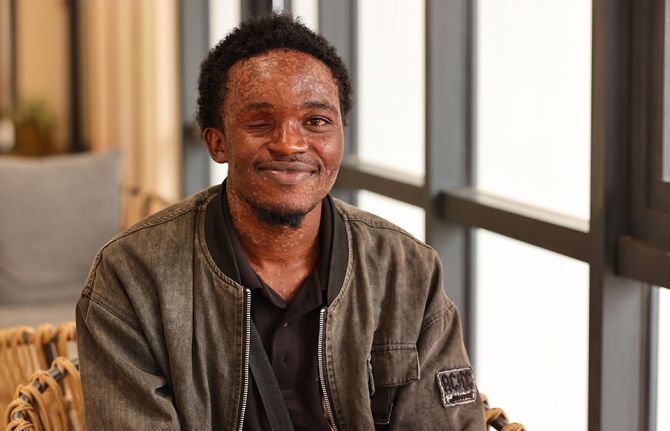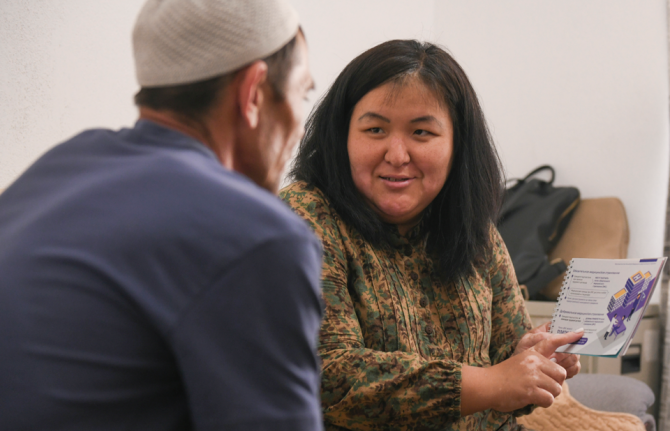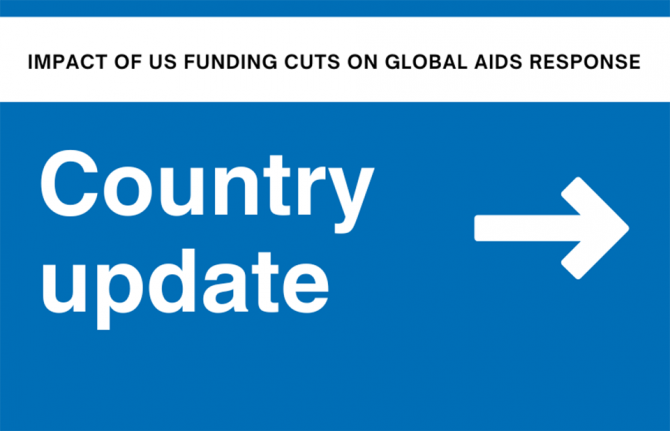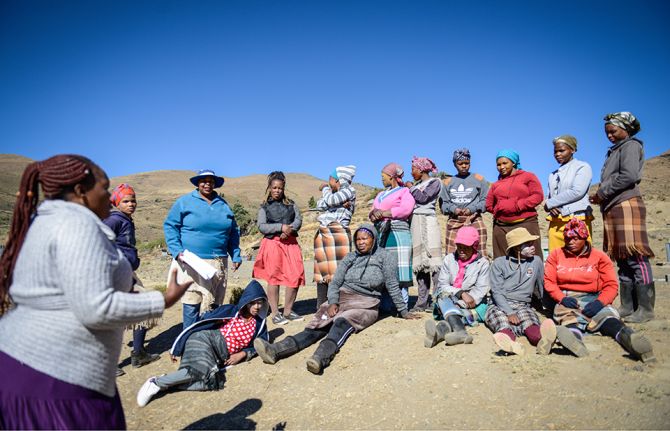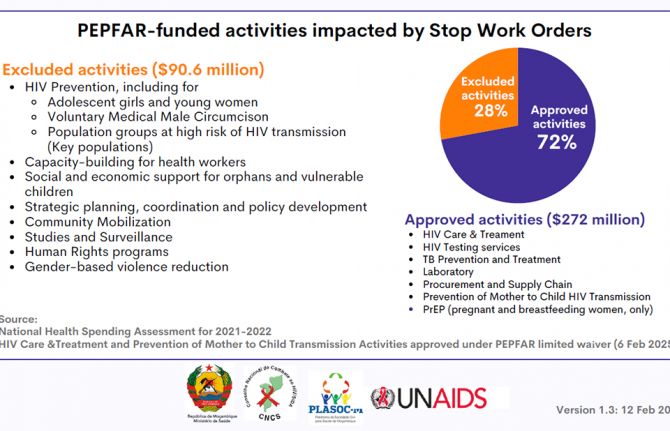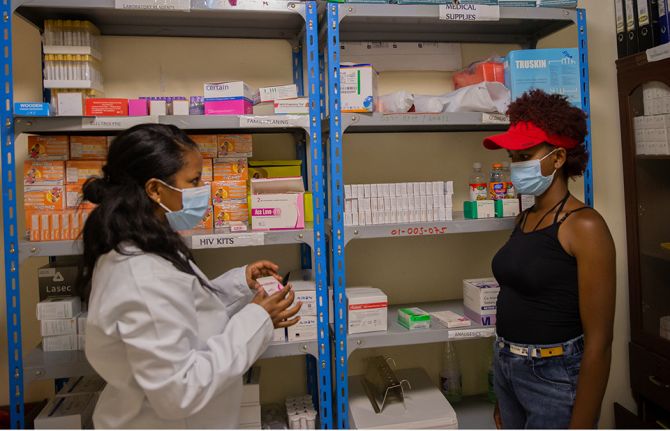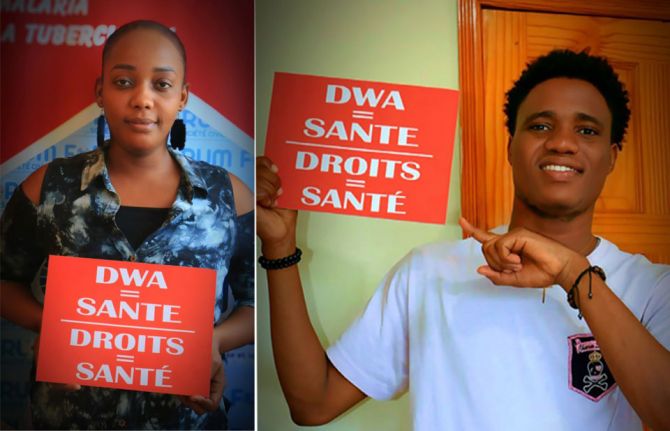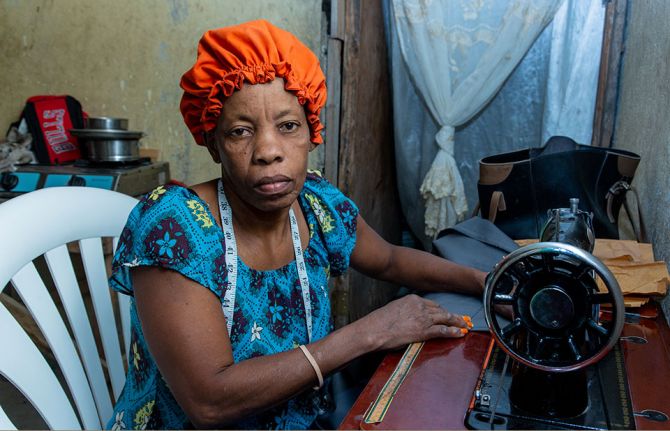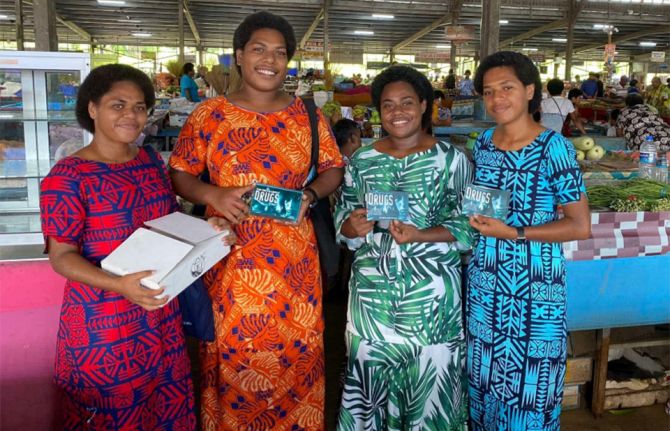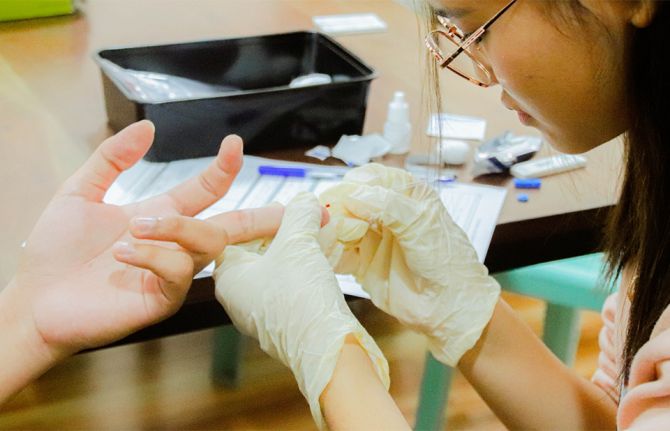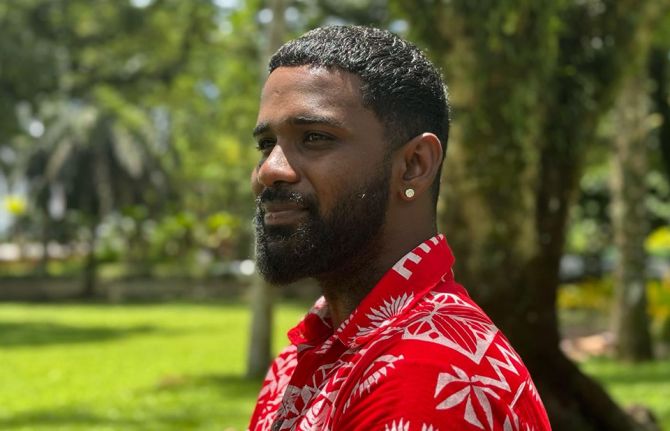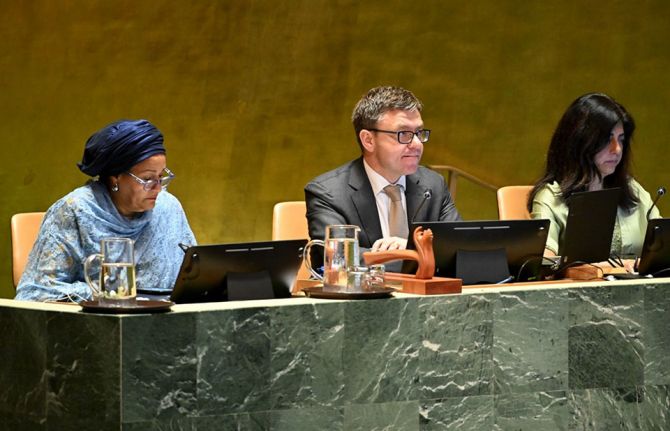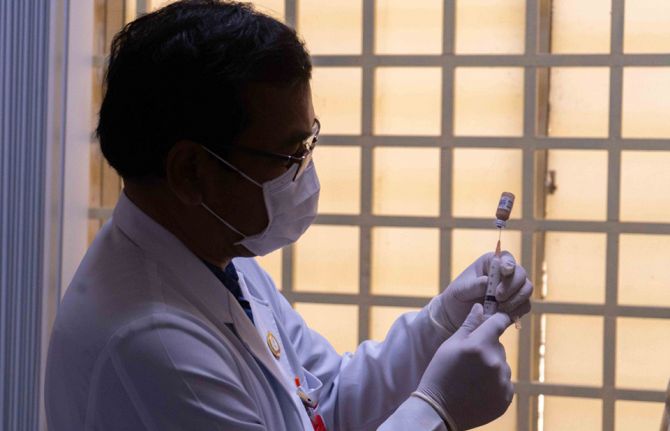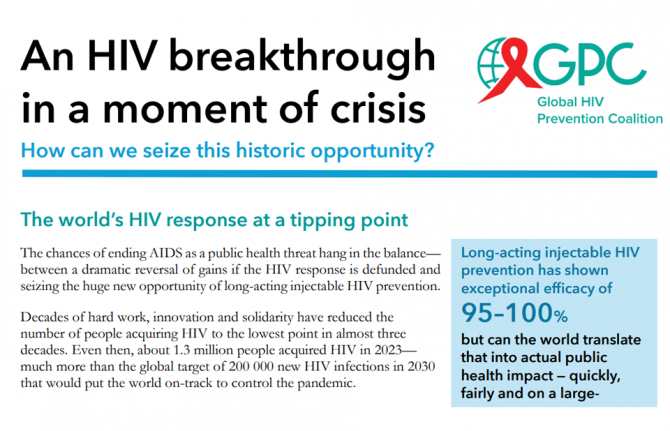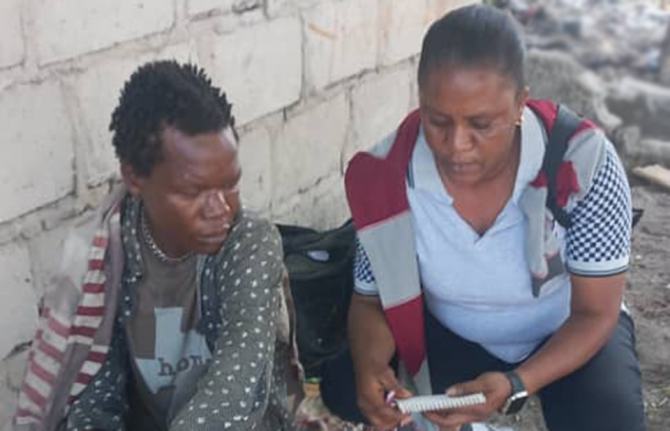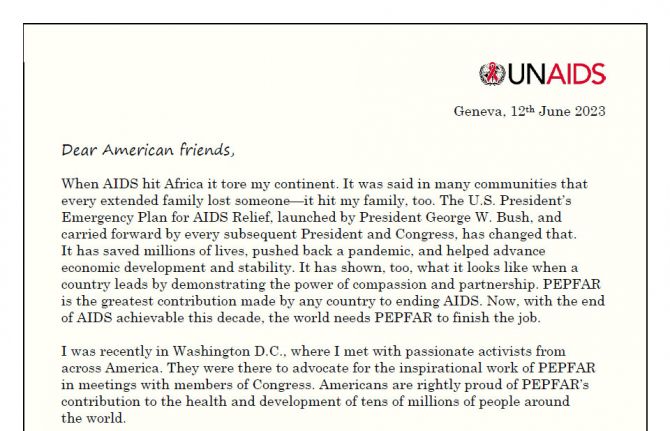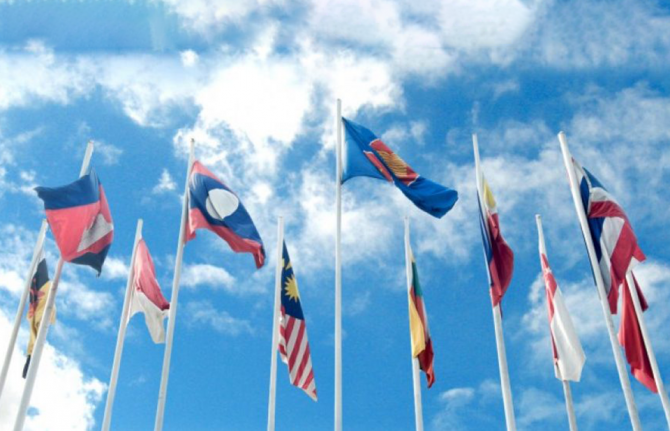
Feature Story
Involving communities in national AIDS responses
11 June 2007
11 June 2007 11 June 2007
Action on AIDS requires greater coordination among
partners to ensure that actions are not duplicated
and resources are used most effectively and
efficiently.
In many countries, communities were the first to mobilize in response to AIDS, and their initiatives often laid the foundations for the development of the national response.
Building on this, experience has shown that action on AIDS requires greater coordination among partners to ensure that actions are not duplicated and resources are used most effectively and efficiently.
As a result, UNAIDS in collaboration with the International Council of AIDS Service Organizations (ICASO), the African Council of AIDS Service Organizations (AfriCASO) and the International HIV/AIDS Alliance are launching Coordinating with Communities – Guidelines on the Involvement of the Community Sector in the Coordination of National AIDS Responses. The aim of the new guidelines is to strengthen the active and meaningful involvement of the community sector in the development, implementation and monitoring of coordinated national AIDS responses.
“While there is widespread acknowledgement that involving the community sector in the coordination of national AIDS responses will increase effectiveness, it often does not translate into actual meaningful involvement,” said Kieran Daly, ICASO Director for Policy and Communications.
“The community sector brings to the coordinating table vital technical knowledge and experiences that can help ensure national AIDS responses meet the real needs of those most affected. For this to work, all stakeholders need to be open to genuine collaboration, using these guidelines to build greater understanding of how to support active and meaningful involvement of the community sector,” he added.
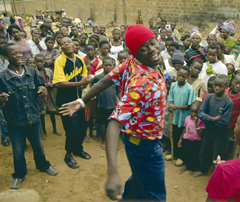
The new guidelines aim to strengthen the active
and meaningful involvement of the community
sector in the development, implementation and
monitoring of coordinated national AIDS responses.
The guidelines aim to provide practical options from which communities and stakeholders can identify the actions that are most appropriate and useful to their own contexts.
The guidelines also aim to promote a set of universal principles, such as human rights and gender equality that are relevant to all countries and contexts. In particular, these guidelines are underpinned by the recognition that the greater involvement of people living with HIV will provide for more effective national responses to AIDS.
The use of the guidelines will be affected by factors such as the current capacity of the community sector’s organizations and networks, and the relationship between community groups and other stakeholders. However, in any country, these guidelines can be used as:
• A tool to assess the current strengths and weaknesses of community sector involvement in all national AIDS coordinating bodies and processes.
• A tool to develop a multi-sectoral action plan to increase and improve community sector involvement in all national AIDS coordinating bodies and processes.
• A tool for advocating to improve and fund both community sector involvement in national AIDS coordinating bodies and processes and also community sector networking and coordination.
• A basis for developing local or district-level guidelines on community sector involvement in AIDS coordinating bodies and processes.
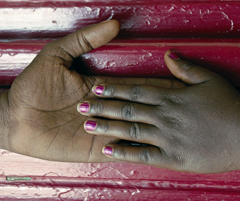
Efforts to increase a harmonized response to AIDS
can only be successfully achieved with the active
and meaningful involvement of the community
sector.
The guidelines were developed in response to requests from groups of people living with HIV, community organizations, and groups and individuals from other sectors who recognized that efforts to increase a harmonized response to AIDS – in line with the ‘Three Ones’ principles – can only be successfully achieved with the active and meaningful involvement of the community sector.
“The involvement of the community sector is critical in our efforts to move towards universal access to HIV prevention, treatment, care and support”, said Michel Sidibe, UNAIDS Deputy Executive Director. “The community sector is at the forefront of identifying the needs of and providing services to affected communities. Therefore they deserve a stronger voice in planning and coordination of national AIDS responses. With these guidelines we are investing in the capacity of the community sector to claim their rightful role among the partners in the AIDS response.”
All photo credits: Gideon Mendel for the International HIV/AIDS Alliance, 2004.
Download Coordinating with Communities – Guidelines on the Involvement of the Community Sector in the Coordination of National AIDS Responses:
Download flyer (pdf, 873 KB)
Part A - Background to Involving Communities ( en | fr | es | ru ) (pdf, 791 KB | 799 KB | 792 KB | 2,27 MB)
Part B - Taking action to involve communities ( en | fr | es | ru ) (pdf, 568 KB | 575 KB | 565 KB | 1,48 MB)
Part C - Action Cards ( en | fr | es | ru ) (pdf, 992 KB | 1 MB | 951 KB | 2,34 MB)
Workshop Facilitation Notes ( en | fr| ru ) (pdf, 395 KB | 400 KB | 347 KB)
Related links:
Visit International Council of AIDS Service Organizations (ICASO) web site
Read more on the 'Three Ones'

Feature Story
South Africa AIDS Conference
06 June 2007
06 June 2007 06 June 2007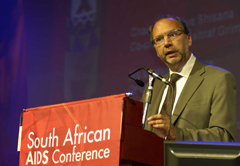
UNAIDS Executive Director Dr. Peter Piot, at the
opening of the third South African Aids conference
in Durban, 05 June 2007.
“If South Africa can achieve its aims, the country will be well on the way to leading Africa into a new phase in the AIDS response,” said UNAIDS Executive Director Peter Piot, at the opening of the third South African Aids conference in Durban yesterday.
Congratulating South Africa for its new “ambitious and credible” five-year National Strategic Plan for Aids, which aims to half new infections by 2011, Dr Piot underlined that the effective implementation of the plan is critical for future progress. “ The National AIDS Plan represents an incentive for all of us, wherever we work, to take a cold, hard look at what we are doing and to change what needs to change,” he said. “Failure to reach the ambitious, but necessary, goals would be a collective failure on all our parts. You have a better chance than any other country in the region to deliver on AIDS. If you can't, who can?" he added.
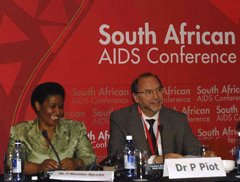
Ms Phumzile Mlambo-Ngcuka, Deputy President of
the Republic of South Africa and Dr Peter Piot,
UNAIDS Executive Director, during the press
conference that took place after the official opening
of the South African AIDS conference in Durban,
05 June 2007
More than 4000 scientists, activists and medical experts have joined in Durban this week for the third South African AIDS Conference. At the conference opening, Dr Piot joined Deputy President Phumzile Mlambo-Ncguka, who heads the recently restructured South African National AIDS Council, social activist Graça Machel and the Treatment Action Campaign’s Nkhensani Mavasa on the podium.
The conference theme is Building Consensus on Prevention, Treatment and Care, and organisers hope to end the four-day meeting with a formal declaration on the way forward on key topics, such as the role of male circumcision in preventing HIV transmission. Other issues up for discussion include WHO/UNAIDS’ new guidelines on HIV testing and counselling and the spread of extremely drug resistant tuberculosis, to which people living with HIV are particularly vulnerable.
The conference will run from 5 – 8 June.
All photo credits: UNAIDS/M.Furrer
Links:
Read UNAIDS Press Release
Read Dr Piot’s opening speech: ‘To reduce AIDS globally, South Africa should succeed’ (pdf, 43 Kb)
Download the HIV and AIDS and STI Strategic Plan for South Africa, 2007 – 2011 (pdf, 1.6 Mb)
Read feature story: South Africa marks key AIDS milestones
Visit the official web site of the 3rd South African AIDS Conference
Related

Feature Story
New report shows increase in AIDS financing but funding still falls short
05 June 2007
05 June 2007 05 June 2007Financing the response to the global AIDS epidemic has emerged as one of the world’s greatest health and development challenges.
As the world’s leaders prepare to meet this week for the annual G8 Summit, UNAIDS and the Kaiser Family Foundation release a new report analyzing funding for AIDS in low- and middle- income countries provided by the G8 and other donor governments.
The report, Financing the response to AIDS in low- and middle- income countries: International assistance from the G8, European Commission, and other donor Governments, 2006 tracks funding levels of the mentioned donor governments, who collectively provide the bulk of international assistance for AIDS through bilateral programmes and contributions to the Global Fund to Fight AIDS, Tuberculosis and Malaria.
Some key findings of the report include that in 2006, international AIDS assistance from the G8, European Commission, and other donor governments reached its highest level ever with commitments totaling US$5.6 billion and disbursements, or funds made available during the year, reaching US$3.9 billion.
The report details how donor government funding has risen significantly over the past several years. “Between 2002 and 2006, commitments and disbursements each increased more than three-fold, although commitments rose at a faster rate than disbursements,” the report states.
In terms of investment levels, the report notes that the United States government provides by far the largest share of donor government funding for AIDS, accounting for nearly half (47%) of funding commitments made by these governments in 2006. The Netherlands ranks second with 17% of commitments, followed by the United Kingdom at 14%.
However, when donor efforts are assessed based on national wealth (AIDS funding disbursements per million US dollars of GDP), three non-G8 Members – the Netherlands, Sweden, and Ireland – emerge as leading the pack in funding. The U.S. falls in the middle and Japan and Italy are at the bottom.
Despite the evident increases in funding for 2006, the report also underlines a US$6 billion funding gap between UNAIDS’ estimates of resource needs compared to resources available in 2006 was US$6 billion, “a difference that could even grow larger over the next few years,” the report states.
Links:
Read the full report (pdf, 144 KB)
Read note to the press on the report (pdf, 43,9 KB)
Additional links:
Read UNAIDS press statement: UNAIDS urges continued bold and decisive leadership from G8 countries on AIDS ( en | fr | ru ) (pdf, 26,9 KB | 33,7 KB | 221 KB)
Visit the G8 web site (in German)
Visit the G8 AIDS Campaigning web site ( en | es | fr | ru | pt )

Feature Story
Keeping Score: AIDS responses in the Caribbean
01 June 2007
01 June 2007 01 June 2007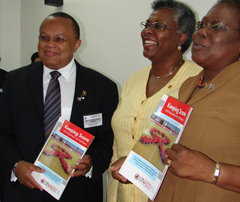
L to R: Dr. the Hon. Jerome Walcott, Minister of
Health, Barbados, Karen Sealey,Director, UNAIDS
Caribbean, and Sen. the Hon. Ann David-Antoine,
Minister for Health, Social Security, the Environment
and Ecclesiastic Relations, Grenada.
To demonstrate commitments and progress made by countries in the Caribbean to addressing AIDS, and to highlight programming challenges , the CARICOM based Pan-Caribbean Partnership Against HIV/AIDS (PANCAP) and the Joint United Nations Programme on HIV/AIDS (UNAIDS) have launched a comprehensive report on national AIDS responses in the region.
For the first time ever, the report—Keeping Score: AIDS Responses in the Caribbean—provides a consolidated analysis of available data on key services being delivered to those in need throughout the region. The report analyzes data from 15 Caribbean nations in conjunction with the 2006 UN General Assembly High Level Meeting on AIDS.
Speaking at the publication launch, Director of UNAIDS Caribbean, Karen Sealey, stated, “Today marks another milestone in the Caribbean’s pursuit of demonstrating results towards the collective global goal of halting the spread of HIV.”
Keeping Score for the first time ever allows the region to see levels of performance across programme areas and across countries, towards meeting commitments made as part of the 2001 Political Declaration. The publication offers a crucial opportunity for those involved in national AIDS responses in the region to take stock of lessons learned in time for improved reporting and programming for reporting back in January 2008.

Karen Sealey,Director, UNAIDS Caribbean during
her speech at the launch of the new publication in
Grenada, Eastern Caribbean, 31 May, 2007
“We see achievements in many areas” Karen Sealey stated. “Responses have been expanded to include many sectors other than health. More funds are being mobilized. Programme reporting is strongest in the areas of treatment scale up and prevention of mother to child transmission.”
Keeping Score provides a quantitative and qualitative analysis of findings by indicator, across all 15 Caribbean reports. Key issues in the implementation and monitoring of national AIDS responses are reviewed and assessed.
However, Dr Sealey also added a cautionary note: “Data on prevention education programmes in general are very weak – more often than not we know numbers reached by various interventions, but we have no idea of coverage in terms of percentage of key populations reached, either by treatment or prevention programmes.”
After two decades, the Caribbean region ranks second in the world in terms of estimated prevalence of HIV infection, surpassed only by sub-Saharan Africa. At the end of 2006, an estimated 250,000 people were living with HIV in the Caribbean. Some 27,000 were newly infected during 2006. HIV infection rates average at 1.2% throughout the region, with the highest rates (2-4%) seen in The Bahamas, Haiti, Trinidad and Tobago.
Links:
Download full report (pdf, 3.2 Mb)
Read press release
More information on the Caribbean region
Related
 Comprehensive Update on HIV Programmes in the Dominican Republic
Comprehensive Update on HIV Programmes in the Dominican Republic

19 February 2025

Feature Story
Grameenphone telecommunications joins forces with UNAIDS
01 June 2007
01 June 2007 01 June 2007
Bangladesh ’s leading telecommunications service provider, Grameenphone Ltd has joined forces with UNAIDS to drive forward advocacy and awareness raising on AIDS issues, as part of the work of the Asia Pacific Leadership Forum on AIDS (APLF) in Bangladesh.
At a ceremony held in Dhaka on 24 May 2007, Managing Director of Gameenphone Erik Aas and UNAIDS Director for Regional Support Team Prasada Rao signed a statement of cooperation that will see the telecommunications giant support UNAIDS in their APLF work to engage high-level leaders from different sectors of the country, including governance, business, media and women in helping create an enabling environment in support of action on AIDS. A major focus of the agreement between UANIDS and Grameenphone is to work together to ensure media coverage for the leaders. Grameenphone will provide necessary support to execute the mutually agreed upon media campaigns.
Speaking at the signing ceremony, Erik Aas said that with Grameenphone’s network of more than 10 million subscribers across the country, the company is in an ideal situation to conduct wide reaching HIV awareness campaigns. "Utilising our infrastructure and employees, I expect that we will succeed," he said.
In Bangladesh, six leaders are already ambassadors of the APLF initiative. Major General (retd) ASM Matiur Rahman, Adviser of Ministries of Health and Family Welfare, Water Resources and Religious Affairs, Runa Laila and Alamgir, cultural personalities, Shykh Seraj, media personality and agriculture development expert, Bibi Russell, fashion icon and activist and Kafil HS Muyeed, Director, New Business Division, Grameenphone Ltd. All attended the event that saw UNAIDS and Grameenphone come together on the issue of AIDS.

“We hope this will encourage thousands of businesses in the country to come forward to address the major threats relating to health, education and poverty alleviation as part of their corporate social responsibility,” said Major General (retd) ASM Matiur Rahman. “AIDS is a global problem, and a reality in Bangladesh. There is no alternative to taking preventive measures – particularly focusing on young people who are at high risk,” he added and stressed the need for a combined effort of all religious minded people from mosques, temples and pagodas.
“Leaders are distinguished by their action, innovation and vision; their personal example and engagement of others; and their perseverance in the face of obstacles and challenges,” said UNAIDS’ Prasada Rao. “Leadership must be demonstrated at every level to get ahead of the epidemic- in families, in communities, in countries and internationally. We welcome working together with Grameenphone Ltd to push forward the AIDS response in Bangladesh.”
The APLF was established in 2002 in response to the commitment for strong leadership on AIDS agreed at the first United Nations General Assembly Special Session on AIDS (UNGASS) in New York in July 2001. Managed by UNAIDS, APLF supports and strengthens political and civil society leadership at country, sub-regional and regional levels to take action to reduce the spread and impact of the AIDS epidemic in the Asia Pacific region.
The first case of HIV in Bangladesh was detected in 1989. According to a 2004 UN study, HIV infections have tripled in the last six years. UNAIDS estimated that 13,000 adults and children were living with HIV at the end of 2002 in Bangladesh.
Links:
More information on Bangladesh

Feature Story
HIV testing and counseling: new guidance
30 May 2007
30 May 2007 30 May 2007WHO and UNAIDS issued new guidance on informed, voluntary HIV testing and counselling in health facilities on Wednesday 30 May, with a view to increase access to needed HIV treatment, care, support and HIV prevention services. The new guidance focuses on provider-initiated HIV testing and counselling (PICT).
Links:
Download PICT Guidelines ( en | fr | ru ) (pdf, 2,65 MB | 1,23 MB | 1,29 MB)
Read Press Release ( en | fr | es | ru | ar ) (pdf, 57,4 KB | 68,4 KB | 61,7 KB | 164 KB | 159 KB)
Read Executive Summary ( en | fr | es | ru ) (pdf, 516 KB | 189 KB | 174 KB | 243 KB)
More on counselling and testing
Related

Feature Story
Asian media unites against AIDS
28 May 2007
28 May 2007 28 May 2007
Top Asian broadcasters, producers, journalists
and media executives have pledged to step
up their response to AIDS.
Top Asian broadcasters, producers, journalists and media executives have pledged to step up their response to AIDS and form the Asia Pacific Media AIDS initiative to ensure increased and improved media coverage of AIDS issues in the region.
Agreement to drive forward the media response to AIDS in Asia came at the one-day conference on ‘Global Media Strategies on AIDS’ held in Kuala Lumpur, Malaysia on Monday 28 May. Over 130 representatives from the region’s leading television, radio, print and electronic media gathered at the conference—a special event held in the lead-up to the 30th Asia Media Summit which takes place from 29-30 May.

Advocate Dali Mpofu, CEO, South
African Broadcasting Corporation and
Chair of the Global Media AIDS
Initiative gave the keynote address.
“AIDS is a global crisis of major proportions that knows no boundaries,” said Advocate Dali Mpofu, CEO of the South African Broadcasting Corporation (SABC) and Chair of the Global Media AIDS Initiative (GMAI), in the keynote address.
“There is no question that the media is one of the most powerful tools for changing the epidemic and it is severely underutilized.”
“The media need to step up action, spreading information faster than the epidemic,” he said.
The day-long conference, organised by the Asia-Pacific Institute for Broadcasting Development (AIBD), UNAIDS, The Asia Pacific Leadership Forum on AIDS and Development (APLF), UNESCO and ISIS Malaysia, discussed a number of key issues around the media response to AIDS including how media can introduce positive change in the attitude towards people living with HIV, the positive and negative roles media have played in the response so far and strategies for taking media response to the next level for accurate, effective communication on AIDS issues.
Keeping AIDS on the media agenda

Bai Bagasao, Manager of the Asia Pacific Leadership
Forum on AIDS and Development, UNAIDS Regional
Support Team, Bangkok.
Opening the first session of the day, UNAIDS’ Manager of the APLF, Bai Bagasao gave an overview of the current state of the epidemic, underlining the need to continue and improve AIDS coverage in the media. “I understand that we are all waiting for a breakthrough, a vaccine, a cure or something dramatic—but the reality is that on a daily basis we are still talking about thousands lost to AIDS and thousands newly infected with HIV. Why then is AIDS dropping off the media agenda?” she asked.
Urging the media to be vigilant and accurate in AIDS reporting, Ms Bagasao quoted the father of modern medicine, Hippocrates, to reinforce the need for ethical conduct. “Declare the past, diagnose the present [and] as to diseases, make a habit of two things –to help, or at least, to do no harm,” she said. “These words of wisdom are so appropriate for how the media needs to respond to AIDS today,” she added.
Media practitioners were reminded of the lasting contribution they can make to the AIDS response. “You have the potential to influence attitudes, behaviour and even policy making,” said Ms Bagasao. “Ensuring the messages are conveyed to assist people to cope with and resist HIV requires wisdom, sensitivity and clarity of purpose,” she added.
Examining a number of examples of how media, knowingly or unknowingly have helped to fuel prejudice and discrimination around AIDS issues, participants were urged to pay special attention to language used in their media products and were encouraged to attend specialist trainings for media on AIDS issues that are offered by a number of United Nations and non-governmental organizations.
Journalist participants underlined the need to raise awareness among their colleagues to ensure clarity of reporting and how this can sometimes be forgotten within the fast paced media world. “I am a news reporter, I have to chase deadlines and sometimes I know I have ignored the sensitive issues,” said Mao Xuzhi, news reporter with China’s CCTV English section. “This is why training is so important – workshops show us how to use the right language and how the choice of certain language and images can add to the discrimination of people living with HIV, so should be avoided,” she said.
AIDS – an agent of change

Firdoze Bulbulia, Chairperson, Children and
Broadcasting Foundation for Africa, South Africa.
Giving people living with HIV a voice to tell their own stories through reports and features was highlighted throughout the day as critical for increased and improved broadcast programming and print media coverage. Media coverage of people ‘living positively’, speakers said, is helping change perceptions of AIDS and breaking down discrimination.
“Let’s get away from the doom and gloom. That idea is 25 years old. AIDS has become an agent of change – it’s making a difference, often making positive waves and we have to move with the times,” said Firdoze Bulbia, Chairperson of the Children and Broadcasting Foundation for South Africa.
Moving media coverage of AIDS further forward, participants were also urged to find innovative ways to report on AIDS issues and integrate HIV into mainstream programming, rather than just having ‘token’ programmes on AIDS issues. “AIDS is with us – people aren’t separate, it’s us together,” said Bulbia. “Mainstream programmes, soap operas, dramas, sit-coms and other shows need to integrate HIV characters into their storylines, just as people living with HIV are integrated in our lives. We need to face up to this – AIDS is not going away, it’s here and we have to deal with this now,” she added.
In an expression of their commitment to step up action on AIDS within the media, participants from the Asian media concluded the meeting by endorsing a declaration of commitment to give more airtime, more resources and to increase cross-outlet collaboration on programme making and reporting. They agreed to form the Asia-pacific media AIDS Initiative—a regional arm of the GMAI – to collectively develop and action a collective collaborative plan and timeline to expand the media response to AIDS in the region.
“We have to step up our action, work through our cultural taboos. This is about saving lives and saving nations,” said Mr K P Madhu from the AIBD.
As part of the conference, an award for the ‘Best TV and radio programme on AIDS’ was held. Winners will be announced during the opening day of the Asia Media Summit, Tuesday 29 May.
Links:
For more information on the Asian Mediat Summit visit the Asia-Pacific Institute for Broadcasting Corporation website
View entries to the competition for 'Best TV and radio programme on AIDS’

Feature Story
Zackie Achmat: “Uniting for HIV prevention”
25 May 2007
25 May 2007 25 May 2007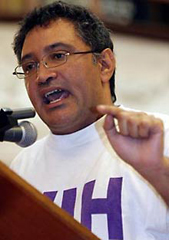
In 2006, UNAIDS came together with civil society, treatment activists, the private sector and governments -- to call for the global community mobilize an alliance for intensifying HIV prevention efforts, under the banner “Uniting for HIV Prevention”.
A key partner from the outset, the Treatment Action Campaign (TAC) continues to push for HIV prevention to halt growing infection rates and sustain the gains that have already been made in the AIDS response such as increased numbers of people on HIV treatment. Here, TAC’s founder and chairman, renowned activist Zackie Achmat shares his thoughts on why “Uniting for HIV Prevention” is critical for the sustainability of the AIDS response as well as healthcare systems, communities and society in general.
Why do you see the need for “Uniting for HIV prevention”?
If people become infected it shortens their lifespan, it has an impact on quality of life and it undermines family relationships, society, and impacts on broader issues like the economy. In our country [ South Africa] every day more than 1000 people become infected and more than 900 are dying from AIDS-related illnesses. From that perspective alone, if we don’t scale up prevention effectively we will increase the death rate, increase the illness and increase the social disruption that can come with HIV.
Who do you think needs to be involved in this movement?
For so many years efforts have been focused on the AIDS community – and frankly, the AIDS community is tired of prevention. Millions of new people have to be garnered for prevention and so we have to turn to how do we bring in new people – how do we bring in the priest, the trade union, the traditional leader, traditional healer, the banker? We have to look beyond the traditional HIV communities.
At the same time, at the centre of all this has been the absence of people living with HIV leading the struggle for HIV prevention. The critical thing has to be, that at the forefront of prevention has to be people living with HIV assisting through their very unique understanding of prevention.
Often we hear that pushing on prevention is going to compete with calls for access to treatment – what do you think about this?
Treatment has given us a unique opportunity to scale up prevention. It has shown that it works and it is working because people who are affected by it have begun to understand and address the access barriers to HIV treatment. Very few people understand the barriers to access to prevention and this is where work is needed now.
I think [treatment and prevention] are marvelously self-reinforcing. From my point of view, the most scandalous thing is that we have so many ARV programmes that don’t ensure that part of the essential package of treatment is to have 6 condoms a week planned as part of the essential package.
So, treatment activists have a great role to play in “Uniting for HIV Prevention” as well?
I think probably the most critical role, because we know the cost of treatment and the future costs this will incur if prevention isn’t scaled up massively. If you take South Africa for example, it’s going to cost our country close to about 5 billion dollars a year in 10 years time, just for treatment. That is a significant amount of money and on a long term basis it’s unsustainable for families and healthcare systems. We don’t want to live in a permanent emergency in our healthcare systems and our society as regards to our health. So, I think that treatment activists should understand best the need for scaling up prevention.
If you could give one message about “Uniting for HIV Prevention”, what would that be?
I would like two messages – firstly, immediately scale up mother to child prevention. It is tragic that all of us have not taken the opportunity that this has given us to scale up healthcare and antenatal services for all women. And the second thing is – it’s everyone’s duty to recognize that this is not a short term battle and so [we all need] to prepare ourselves in the long term by reading, studying and acting on the knowledge we get—urgently.
Links:
Listen to key excerpts of the interview with Zackie Achmat
More on Uniting for Prevention
Read Press Release: Uniting for Prevention ( en | es | fr | ru ) (pdf, 38.6 KB | 50.5 KB | 58.8 KB | 171 KB)
Visit Treatment Action Campaign (TAC) website

Feature Story
UN General Assembly meets on AIDS
23 May 2007
23 May 2007 23 May 2007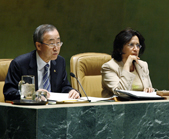
At the 61st session of the General Assembly, United Nations Secretary-General Ban Ki-moon confirmed his support to the AIDS response promising to ensure that the international community remains united against the epidemic. “In some way or another, we all live with HIV. We are all affected by it. We all need to take responsibility for the response,” he said. His remarks were heard by UN Member States as he delivered a statement during the review of the progress made towards universal access to HIV prevention, treatment, care and support.
Speaking for the first time on the issue of AIDS, the Secretary-General presented his vision on the UN's response to the epidemic, promising that: “AIDS would remain a system-wide priority for the UN”; “the UN would deliver as one on AIDS and would further strengthen the already pioneering coordination efforts of UNAIDS and its Cosponsors”, and that he would “make every effort to mobilize funding for the response to AIDS.”
At the Plenary, The President of the General Assembly Sheikha Haya Rashed Al Khalif gave the opening statement, stressing that AIDS “demands the sustained engagement of the world community” and that there was a need for “those living with HIV and those at greatest risk of infection to be at the centre of the response.” The General Assembly President personally presided over the meeting throughout its entire course.
The plenary concluded with the adoption by consensus of a decision that welcomed the Secretary General’s report and its recommendations.
As part of events surrounding the General Assembly, the Secretary-General met for the first time with his Special Envoys for AIDS—Dr Nafis Sadik for Asia and the Pacific; Sir George Alleyne for Latin America and the Caribbean; Professor Lars Kallings for Eastern Europe and Central Asia, and; Ms. Elizabeth Mataka for Africa, whose appointment was announced that day. A number of specific suggestions were given at the meeting to ensure effective advocacy by the Special Envoys on AIDS issues.
On 21 May, the Secretary-General also met with UN Plus, the advocacy group of UN staff living with HIV. The meeting had a strong impact on the SG. “My perspective has totally changed," he told colleagues. "I have met many people in my life -- presidents, kings, diplomats. But this was one of the most important events of my life. I was very touched by their courage.” The Secretary-General also announced that on his next trip to Asia he would visit an AIDS clinic or a similar facility.
Links:
Read UN Secretary-General's speech ( en | fr ) (pdf, 31 KB | 22,3 KB)
Read statement by General Assembly's President (pdf, 28,9 KB)
Read UNAIDS statement on appointment of new Special Envoy (pdf, 25,6 KB)
Read Press Release ( en | fr | es | ru ) (pdf, 28,9 KB | 51 KB | 40,7 KB | 168 KB)
Read Media Advisory (pdf, 92 Kb)
Download UN Secretary-General's progress report (pdf, 240 Kb)
Read more about the UN Secretary-General's meeting with the UN Plus group
Related

Feature Story
UN Plus meets UN Secretary General
22 May 2007
22 May 2007 22 May 2007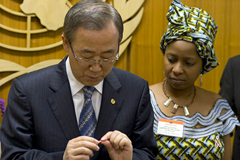
As part of the 61 st session of the General Assembly,
UNPlus met with the United Nations Secretary-
General Ban Ki-moon to brief him on key
achievements of the group.
As part of the 61 st session of the General Assembly, UNPlus– the UN system-wide group of staff living with HIV– met with the United Nations Secretary-General Ban Ki-moon to brief him on the key achievements of the group since its inception in March 2005 and to discuss the opportunities and challenges that UN positive staff face at work.
During the meeting, a delegation of UNPlus members presented the Secretary-General with specialized position papers covering four main issues of concern: stigma and discrimination, confidentiality, medical insurance, and travel restrictions and mobility. The group also made specific requests to the action items outlined in the papers. The meeting also served to evaluate the progress made on the concerned issues and discuss the way forward to improve the workplace environment for all people living with HIV working within the UN system.
“Our requests to the Secretary-General mainly focus on the need to revise the personnel policy and to institute strong administrative procedures to curtail stigma,” said Bhatupe Mhango, UN plus coordinator. “Secretary-General Ban Ki-moon ’s support to UNPlus is critical. We hope he will continue to raise the issues of positive people far and wide-both within the UN system and in his external engagements,” she added.
Twenty-five years into the pandemic, HIV is a reality for workplaces across the world. With approximately 193 member states and an almost equal number of country offices worldwide, the United Nations workforce is no exception.
Addressing the issue within the United Nations, UNPlus was initiated in March 2005 by a group of UN staff members living with HIV, with the support of the UNAIDS secretariat, to create a more enabling environment of all HIV-positive staff members, irrespective of the level of disclosure of their HIV status. UNPlus aims to create an organized and effective voice for people living with HIV within the United Nations system that challenges stigma and discrimination, and contributes to the development of and improvement of existing policies on HIV among United Nations agencies.
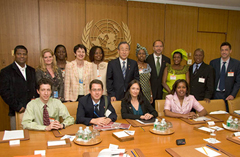
UNPlus was initiated in March 2005 by a group of
UN staff members living with HIV, to create a more
enabling environment of all HIV-positive staff
members.
“UNPlus is remarkable in the sense that in essence it is UN Reform in action. It brings together people from different backgrounds, cultures, beliefs, professions, salary grades, around a common issue. The common issue is ensuring equality, solidarity and acceptance for people living with HIV,” said Mhango.
The first global meeting of UNPlus took place in Amsterdam in March 2006. The meeting was attended by more than 30 people living with HIV working in 11 UN organizations around the world and saw the development of the UN Plus position papers.
Coinciding with the meeting with the UN Secretary-General, UNPlus officially launched its website: http://www.unplus.org/ . The website provides staff members, UN agencies and other external partners with important information concerning HIV in the workplace. It also promotes positive living and highlights the challenges and successes of people living with HIV from around the world. To mark the launch, the web site features an exclusive interview with the UNAIDS Executive Director on the exceptionality of AIDS.
Links:
View Photo Gallery
Listen to interview with Bhatupe Mhango, UNplus Global Coordinator
Visit UNplus website
Read UNplus Position Papers
View exclusive interview with UNAIDS Executive Director, Dr. Peter Piot
Read UN Secretary-General's impressions after meeting UNplus members
Related
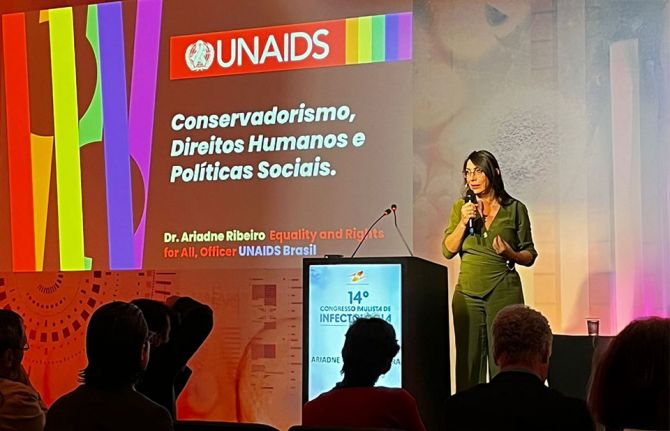 Upholding dignity for everyone: Ariadne Ribeiro Ferreira
Upholding dignity for everyone: Ariadne Ribeiro Ferreira

21 November 2024
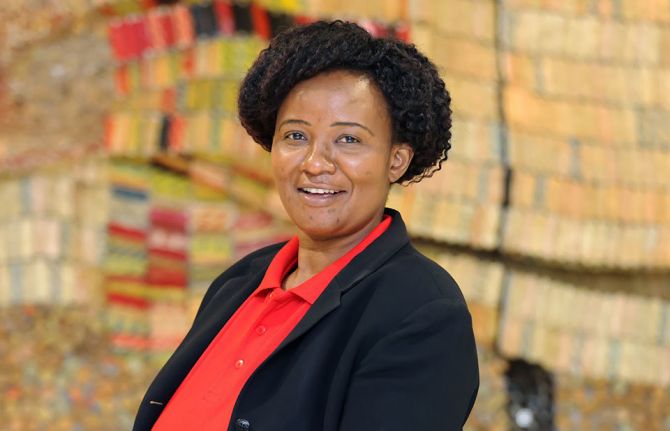 Evelyn Siula: A journey of strength and solidarity
Evelyn Siula: A journey of strength and solidarity
18 November 2024

